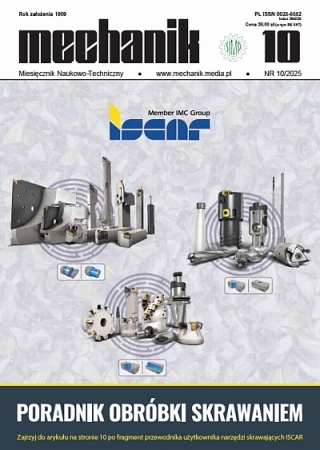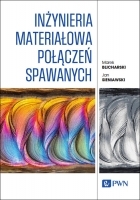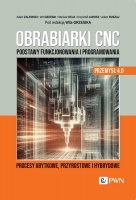Teoretyczne badania właściwości dynamicznych łóż obrabiarki wykonanych z żeliwa i hybrydowego połączenia żeliwa z odlewem mineralnym
Theoretical research of dynamic properties of machine tool bodies made of cast iron and hybrid connection of cast iron and mineral cast
Mechanik nr 08/09/2015 - Wersje autorskie artykułów z XXXVIII Naukowej Szkoły Obróbki Ściernej zamieszczone na płycie CD
STRESZCZENIE: W artykule przedstawiono teoretyczną analizę modalną dwóch korpusów obrabiarki: jednego wykonanego z żeliwa szarego oraz drugiego wykonanego z hybrydowego połączenia żeliwa i odlewu mineralnego. Analiza została przeprowadzona w celu określenia właściwości dynamicznych dwóch korpusów o podobnych kształtach wykonanych w tradycyjnej oraz nowatorskiej technologii odlewniczej. Dodatkowo przeprowadzono analizę sztywności statycznej konstrukcji obu korpusów. Podczas badań symulacyjnych stwierdzono wzrost sztywności dynamicznej oraz wzrost sztywności statycznej korpusu obrabiarki wykonanego z hybrydowego połączenia żeliwa szarego i odlewu mineralnego.
SŁOWA KLUCZOWE: odlew mineralny, odlew żeliwny, korpus obrabiarki, właściwości dynamiczne
ABSTRACT: The paper presents a theoretical modal analysis of the two machine tool bodies: one made of gray cast iron and the second made of hybrid connection of cast iron and mineral cast. The analysis was conducted in order to determine the dynamic properties of two bodies of similar shapes made in the traditional and innovative casting technology. In addition, an analysis of the static stiffness of the structure of two bodies was performed. During the simulation studies it was found an increase in dynamic stiffness and increase in static rigidity of the machine tool body made of hybrid connection of cast iron and mineral cast. The results of theoretical studies have confirmed the desirability of using hybrid construction because the dynamic properties of so formed body are more favorable in comparison with the conventional body made of cast iron.
KEYWORDS: mineral cast, cast iron, machine tool body, dynamic properties
BIBLIOGRAFIA / BIBLIOGRAPHY:
- Kwapisz L., Froncki W. „Zagadnienia wybrane z konstrukcji obrabiarek”, Wydawnictwo Politechniki Łódzkiej, Łódź, 1994.
- Bruni C., Forcellese A., Gabrielli F., Simoncini M. “Hard Turning of an Alloy Steel on a Machine Tool with a Polymer Concrete Bed”, Journal of Materials Processing Technology, pp.493-499, 2007.
- Kępczak N., Pawłowski W. “Application of Mineral Casting for Machine Tools Beds”, Mechanics and Mechanical Engineering. Vol. 17, No. 3 (2013) 5-15, pp. 3-7, 2013.
- Haddad H., Al Kobaisi M. “Optimization of the Polymer Concrete Used for Manufacturing Bases for Precision Tool Machines”. Composites: Part B, pp. 3061-3068, 2012.
- Erbe T., Król J., Theska R., “Mineral Casting as Material for Machine Base-frames of Precision Machines”. Twenty-third Annual Meeting of the American Society for Precision Engineering and Twelfth ICPE, October, Portland, Oregon, 2008.
- Cortés F., Castillo G., “Comparison Between the Dynamical Properties of Polymer Concrete and Grey Cast Iron for Machine Tool Applications. Elsevier, Materials and Design 28, pp. 1461-1466, 2006.
- Kępczak N., Pawłowski W., Błażejewski W. „The Study of the Mechanical Properties of the Mineral Cast Material”, Archives of Mechanical Technology and Automation, pp. 25-32, 2014.






















